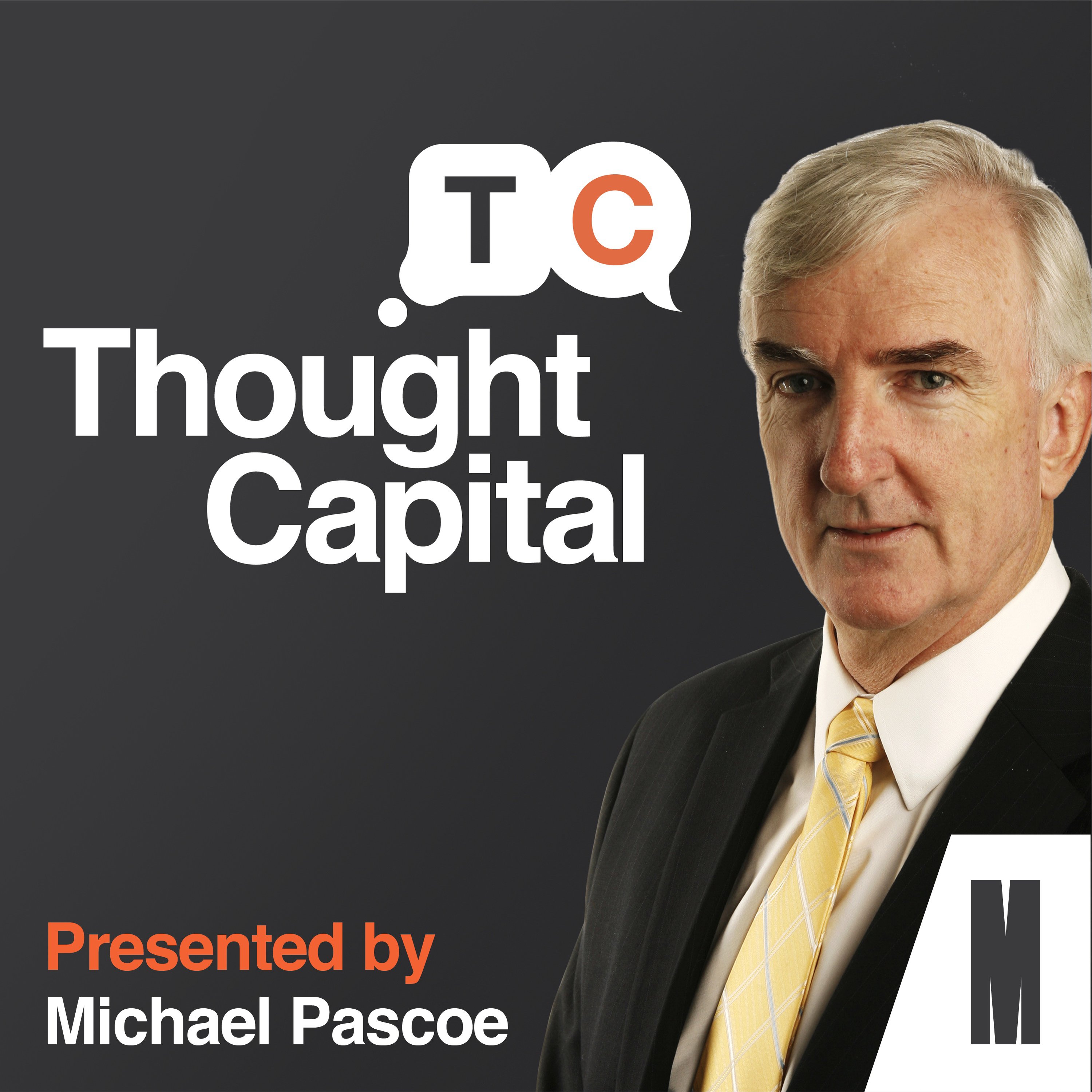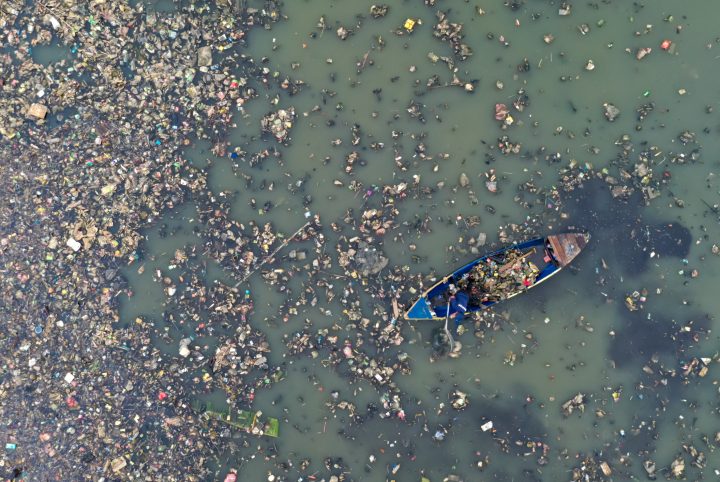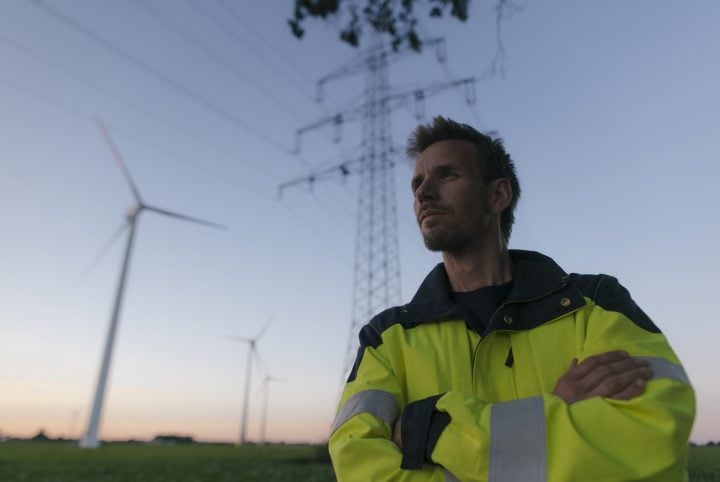Michael Pascoe: At the height of the linear economy, we more or less took resources from the earth, made products from those resources, used the product for a while, and then threw them away with much of what we produced ending up as waste in the earth and the ocean. Some of it, waste that fouls our environment for decades. Among other things, such a system is energy intensive. To combat climate change, there’s a drive to move away from the wasteful linear economy towards a more sustainable circular economy.
Hello, I’m Michael Pascoe. Welcome to Monash Business School’s Thought Capital. With me today to discuss the circular economy is professor Amrik Sohal from the department of management at Monash Business School, an expert on supply chains, and Helen Millicer, Churchill fellow and sustainability expert, who you’ve already met in a previous episode of this series. Good to have you both on the program. So Helen, what is a circular economy? How is it different from a linear economy?
Helen Millicer: Well, I think your introduction was excellent, Michael. It is defined as non-linear in the sense that product and materials are retained in the economy for as long as possible. They are designed for reuse, for repair, for recycling. They are not made into something and then disposed to landfill. And so it’s quite a substantial change from the way we manage resources now. In a sense, you could almost think that we have reached the giddy heights of wastefulness to date, particularly in Western economies and here in Australia, over excessive consumption and disposal. So, we have reached to some extent, the most awful point of the peak of consumption and waste. And now definitely we are starting to turn the tables around.
Michael Pascoe: Oh, and give me some hope. Are there any sectors of the economy that are beginning to succeed?
Helen Millicer: Yes, I can say that. For example, he here in Victoria, our measure by the Victorian government to mandate that all households have some organic collection, whether that’s at the curb or for drop off of food and organic green garden organics, that has to be in place by 2030. We are the first state to mandate that and start rolling that out. That will mean a reduction in organics to landfill, going to beneficial uses such as compost or anaerobic digestion, but we still haven’t tackled business and materials arising from the agricultural sector. So yes, we are on the journey. What are we doing well in? We’re starting to turn the tide a little on packaging. There’s a lot more that can be done. We still have packaging going onto the market, which is neither reusable nor recyclable. And it’s only good destination is incineration or landfill, but we know what the solutions are, Michael. So if you are asking me for something hopeful, the solutions are there. The seeds of opportunity are there. And hopefully, with good collaboration and sensible policy from both within industry and governments, plural, we will achieve that.
Michael Pascoe: Amrik, your research focuses on supply chains. What did they have to do with the circular economy?
Amrik Sohal: Without properly optimized supply chain, we are not going to be able to create a circular economy because the whole economy relies on logistics and transportation and you know, the whole supply chain all the way from design, procurement, manufacturing through to distribution, use, and return if you like. So we need to design products and components so that they last long, we design products so that they’re easy to disassemble, repair and so on, and we need to keep these products and materials and components and use as long as possible. Circular economy is all about regeneration and restoration, if you like.
Michael Pascoe: Globalization has resulted in very long supply chains, supply chains that have worsened the environmental impact. Do we have to begin to wean ourselves off that?
Amrik Sohal: Well, that is beginning to happen already. Through this pandemic, we experienced a shortage of lots of products, not only medical type of products, but cars and all sorts of other products. So we have to rethink our strategies and international policies and international collaborations and see whether we can bring manufacturing closer to home. And of course that will reduce the carbon footprint as we reduce all this transportation.
Michael Pascoe: But these flies in the face of the whole creation of wealth through the economic principle of using comparative advantage, wealth has been spread around the world by sharing the work. Can’t we have both?
Amrik Sohal: I think we can, but we shouldn’t rely completely on those countries for cheap manufacturing. As a developed nation, we need to do much more to help develop those countries, not only through products, but developing their capability to do design themselves.
Helen Millicer: The truth is that moving to a more circular economy, i.e. through collection, repair, reuse, and recycling will support growth in Australian manufacturing. We are already seeing that as a result of the Australian government’s decision to ban the export of unprocessed tires, unprocessed cardboard, and unprocessed plastics that manufacturers are diversifying or expanding their production facilities here in Australia. Some of them admittedly with government support, but some of them simply through their own balance sheets and through their own capacities. And sometimes what they are doing is they’re processing the material for both Australian and international markets. And now if we follow the line, for example, of places like Sweden, or some other countries where they have significant incentives and priorities around reuse and repair and recycling, we will see an extraordinary flourishing of industrial capacity jobs here in Australia, as well as vastly improved productivity for the resources that we have.
So it is connected. The linear economy actually supports a highly wasteful economy, both locally and internationally. The more we insist or ensure or require through rules or pricing that products that are put onto the Australian market are designed for long life, that lifespan is disclosed via a labeling system, similar to one which is being introduced in Europe, that products that are put into the market must be able to be repaired. So we know that Apple has announced that they are going to now be designing their phones for repair. Those sorts of measures, combined, will ensure that the way in which we use materials and products will mean that we will have a far more sustainable and efficient economy overall.
Michael Pascoe: There has been a spinning of the ban on exporting waste to suggest it was an Australian initiative. Other countries are sick of taking it. Haven’t they banned us, rather than we banned the export?
Helen Millicer: That is true, but we are the first country in the world to ban the export of it. Other countries can export waste so long as it meets certain criteria. Australia is the first to identify particular commodities such as waste cardboard, tires, and plastics that cannot leave the country unless they are processed. That means that we are no longer sending awful stuff, as we have been increasingly doing over the last decade in particular. And we are not sending that material offshore to countries where they have lower labor costs, poorer environmental standards and regulations, and causing significant problems for them in terms of pollution and litter.
Michael Pascoe: Amrik, which parts of the supply chain are doing well? Are there industries that you can point to as good examples?
Amrik Sohal: All around the supply chain, if you like, particularly warehousing and distribution and transportation has improved enormously. Procurement practices, taking it into account environmental concerns, that is beginning to be improved. We’ve done some work with some of the larger organizations there, developing their procurement practices in a much more sustainable procurement and so on. Where we still need to do a lot of work is organizations thinking more seriously about design. The design of the products, the design of their production systems, and so on.
These really need to take into account all aspects of sustainability and circular economy. We’ve traditionally talked about the three Rs. You know, reduce, reuse, recycle. We, now we have a list of 10 Rs and the very first R is refuse. You will not do this. You will not accept this type of product or this type of raw material. If it doesn’t fit into your, your value system and so on.
Michael Pascoe: Consumers are called to recycle, reduce, and reuse, and as you say, refuse. What can we do about the packaging on products when they arrive? In terms of a circular economy, I sometimes get deliveries that have more packaging than actual product. Whose fault is that? Do I blame the supply chain? Do I blame myself?
Helen Millicer: Packaging is designed to protect the product in transit. It’s also designed to brand and identify one product from another. There is surplus packaging, and that should definitely be called out the system that we have talking about packaging in Australia at the moment is that we do not have a requirement that products or packaging that goes onto the market needs to be designed for either disassembly or recycling. While we have a battery stewardship scheme, and we have a packaging stewardship scheme, there is no incentive or disincentive for the manufacturers or the brand owners to change what they put onto the market.
It’s a flat fee that they pay irrespective of the design or recyclability or the durability of that product. In Europe however, by comparison, if you are in Paris or in France, you pay a premium, if you are putting non-recyclable packaging onto the market. So there is therefore an encouragement for companies to have recyclable packaging going into the market. In the UK, they’ve gone a step further. They now have a plastic packaging tax for plastic packaging that does not contain recycled content. In Europe, they’re actually applying that across the board to all plastics. So all plastics now going forward, as of, I think April this year, will need to have recycled content in them or pay a premium price for that.
Michael Pascoe: Amrik, what kind of incentives and regulations would be useful in the supply chains?
Amrik Sohal: Well, one of the biggest problem is that we don’t have global standards and global regulations around packaging and pallets and lots of other things as well. So what comes here cannot be used, what goes from here to Europe or north America, pallets and so on, packaging can’t be used. So we’ve got to think globally about these packaging solutions so that whatever is left behind after the use of the product, that locally, those materials and pallets and so on can be reused there.
Helen Millicer: There is no incentive for a company to do better at the moment. We know that it can be changed. I mean, if we look at, for example, the Montreal Convention, which was around the phase out of CFCs, which caused the hole in the zone layer, we know that global agreement can be reached. It’s not outside our capacity to come to some agreement on, for example, packaging. If we take some further measures such as saying, “Well, this can’t go to landfill anymore because it’s actually a valuable material or commodity or product.” It’s going to go instead for repair as part of a stewardship scheme, or it’s going to go for recycling. And that also will be part of a stewardship scheme. And it’s priced accordingly to provide incentive for us to separate it, take care of it and put it back into the system again. That’s entirely feasible.
It’s done overseas in other countries. There’s no reason why that can’t be applied here in Australia. Hopefully, the people coming through listening to this will be encouraged to think how can they help change the system from where we’ve been, then go, “Okay, we need to move away from this landfill and this linear model, we’re going to a circular model. How do we achieve that?” And that’s what we need now. Complacency is not where we need to be. Absolutely all the intelligence and capacity that we can muster, must be applied to solutions. We can’t do it without the Australian population, but we absolutely cannot do it without the leadership of both industries, governments, and businesses.
Michael Pascoe: Professor Amrik Sohal and sustainability consultant, Helen Millicer, thank you for talking to us. And thank you for listening to Thought Capital from Monash Business School. Next time we’ll be talking about sustainable investing, the risks and challenges.
Thought Capital is written and produced by Tina Zenou, editing by Nadia Hume. Our executive producer is Helen Westerman.




